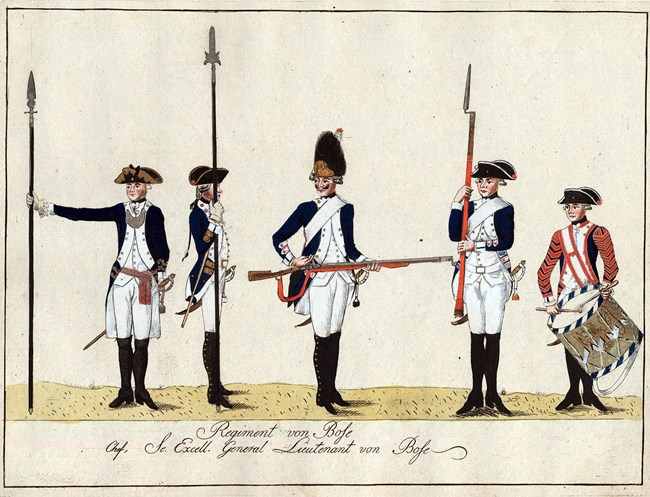
NPS Photo Crown Forces Units at Guilford CourthouseThe Brigade of Guards were considered the elite of Cornwallis's army. The British Army had three regiments of Foot Guards who traced their lineages to the 1660s. The brigade saw their first combat in the Revolutionary War at Long Island. They fought in the 1776 New York campaigns and in the 1777 Philadelphia campaign. Afterwards, they fought at Monmouth and served in the New York garrison until 1780. They joined Cornwallis's southern army in January 1781. 
Courtesy of the Brown University Library HessiansNearly 30,000 total “Hessians” served in North America but they were not all form Hesse-Kassel, a small principality in what is today Germany. The reason that term is used to reference all these Germanic soldiers is due to the fact that the overwhelming majority of them (18,000) came from that one state. As for the Hessians at Guilford Courthouse, the Regiment Von Bose were indeed true Hessians, while the Jaeger Company here may have had a mixture of men but predominantly from Ansbach-Bayreuth. JaegersGerman rifle units serving alongside the British army, Jaegers were well trained light infantry. A company of about 50 were present on the north end of the British line at Guilford Courthouse. A reoccurring myth of the Revolution is that the British were beaten because they did not understand light infantry or guerilla tactics, but the British army not only employ rifle units, they also have their own light infantry units, all trained to operate in loose or “open” order in rough terrain. The French and Indian War (1754 – 1763) was hugely influential to both Americans and British alike, when it came to refining combat doctrine in North America. |
Last updated: April 6, 2024
